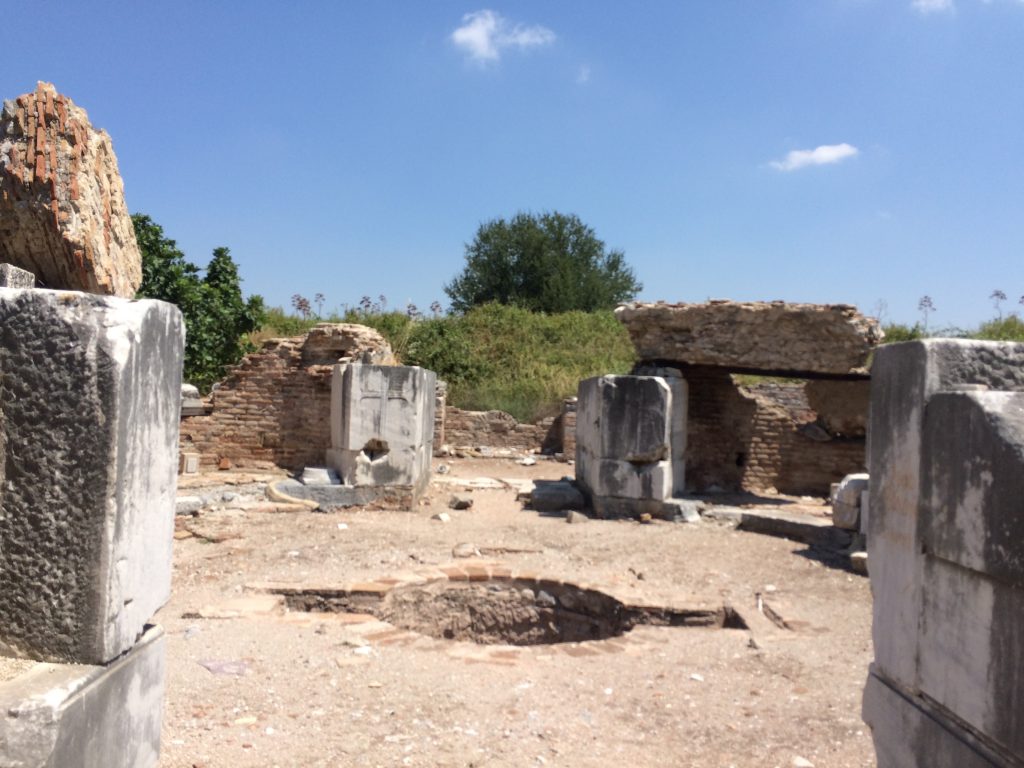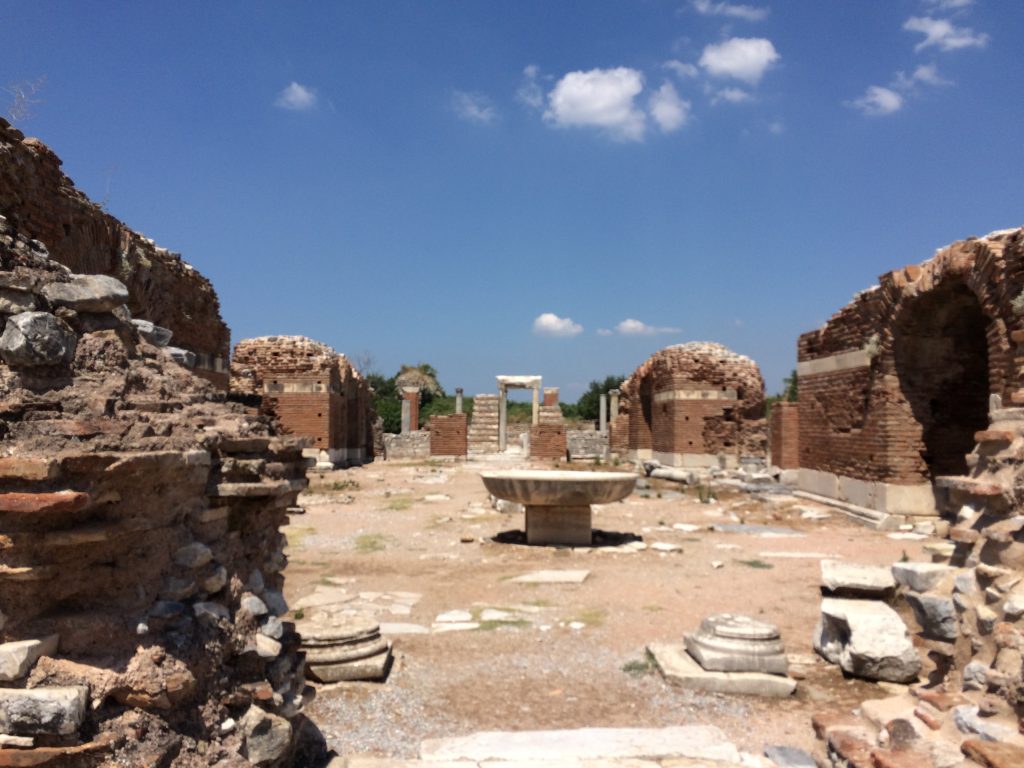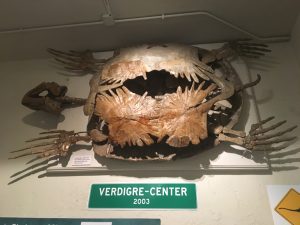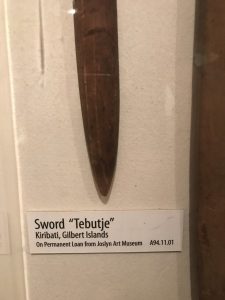Posts Tagged 'history'
In the midsummer of 2016 I was in southwestern Turkey, staying in the sunny resort town of Bodrum with a friend. Going early in the morning, I was able to travel from Bodrum to the Selcuk area with unremarkable traffic, where I was able to promptly begin my sightseeing. After stopping at a cafe, we arrived at the ruins of Efes, once a lively port city called Ephesus, and center of trade and cultural exchange in a sparser corner of the Aegean. In its hay-day, it was among the larger cities in Anatolia, with cults from around the Aegean, a port at a sharp corner of the sea where its docks must have given sailors from Iberia to Egypt a sigh of relief, and several theaters and homes of the elite from across the empire. It was contemporary with Sardis and several other cities that grew to prominence in the Roman era, and with a history that firmly treads into the fog of prehistory with potential Hittite origins as Apasa. The region’s drying up was its demise as a social and economic center, but also allowed for the city to be preserved better than many others, and it’s one of the most substantial Roman ruins of the world today.

The ruin is surrounded by many broad, sun parched hills, dotted with forest and shrubland, and streams descending into valleys, which once carried the silt that sealed Ephesus’ fate in becoming enveloped in the arid plain that now fills the old harbor area. One of the first activities you will notice is the processes of the archaeological survey and restoration of the ruins. These surveyors are hard at work, unearthing the ruins, protecting the most fragile of the ruins, and restoring the impossible puzzles of time’s weight on the world. As is the case with the terrace homes of Ephesus, the homes of the elite in the city. These are some of the best-kept Roman domi, houses used by wealthier freemen and aristocracy. These houses’ defining features are that they are multi-roomed, built around an atrium, decorated with mosaic and painting, and that they will have more amenities than the insulae most people lived in. Some of these buildings would also have central heating from a cell called a hypocaust, an underground room of stoves to heat either homes or baths. The hypocausts would sometimes be connected with other buildings via clay piping, which can be observed running through the ground as piping still does today.I began to notice the massive cat population of the ruin today, as I saw some toms in a spat. As I pass these cats, I think of the long-standing cat-friendly culture of Turkey today and always. The ticket office and gift store people took care of the cats and regularly left water and a bit of food brought in from town.

As one moves down the main avenue, one will be able to observe the centers of commerce, culture, and the everyday social environment of Ephesus. Along this way, I passed the first theatre, presumably one built later in the city’s life, or a theatre restored earlier in the process, as it was in more pristine condition than the one in the larger forum, near the former harbor and the church. The seats were very smooth and austere, just large enough to serve as benches, and they resembled a grand series of stairs more than they did the bleachers of our age of aluminum and plastic. In the city’s life, this stage served for more than just drama and comedy, but was also a general oratory center for any aspect of life that allowed people to seek public concensus, an organ, perhaps somewhat vestigial, from the republican and democratic periods of the Graeco-Roman world. I passed by the Library of Celsus, a classically designed building in the Corinthian style with magestic statues of Virtue, Wisdom, and Knowledge, personified in the angelic style of the time. These abstracts would later be sanctified by the Christians as well, and yet again personified as saints, so, if you were seeing some Roman Christian sites elsewhere in your journey where you have seen iconography of Saint Sophia, chances are there will be some recurrence in motifs, and it will immerse you in a feeling of deja vu and slight familiarity within those ancient buildings.



Later down this avenue, I passed through the bathhouse, a center of another foundational aspect of classical living lost for a time, hygiene. The actual basin of the bath had at this point become partially filled with rubble, partially broken open, but one could make out where there had been latrines, hypocausts, and one could almost make out the cooking stalls in the buildings surrounding this bathhouse. It is very easy to become immersed in the spirit of the place, and to remember how people once lived here with abundance in an age we imagine as being a time of incredible scarcity. One can see how they became comfortable, but as you pass into the overgrown forum and the bone-dry harbor, now filled with silt, sand and dust, where once the sea connected Ephesus to the rest of the Roman country, one can also understand that life demands adaptation.

The forum was a wide field of grass crossed with cobblestones and marble, lined with now buried shops and insulae, with a larger theatre, wide, tree-lined roads for parades and for moving the merchandise from the harbor to the markets and forums. The larger theatre must have been double the width and height of the theatre in the hillier end of town, and with much more work to be done for its restoration. In the marketside of this part of town, I saw tablets in koine Greek which must have contained familial and mercantile record, as advertising in this time was primarily image-based through painting and mosaic to accomodate for illiterate shoppers. I saw amphorae, cups, and jars, which, in another time, contained wines, fish sauces, dyes, and oils from Italy, Lebanon, the Pontus, Greece, and all over. Finally, I saw the Church of Saint Mary, built partially from the cult shrine of Artemis, which I unfortunately missed during my time in Ephesus. Here, a council in 431 AD confirmed Mary as the mother of Jesus in the written doctrine of nearly every existent Christian sect today. From the modern baptismal font placed there by the Catholic church, to the ancient mosaic nave of Roman cobblestone, its magesty is timeless. One can also determine the long and cruciform, though wide and bulky architecture of this Roman church, built before the distinction of Christians on national cultural boundaries, would have been a mark of novelty and familiarity for Christians anywhere in Rome arriving in such a classical city, with noticeable pagan and pre-Constantinian elements.






This is Morill Hall, located in the heart of Lincoln, Nebraska. Here you can find a large collection of the Mammoth remains that have been found all across Nebraska, as well as a variety of sea critters as Nebraska used to be under water in the Late Cretaceous period.
Various Fossils
All of these fossils were found in Nebraska over the last century found by various different people digging about in their yards and paleontologists.
Weapons Throughout the Ages
If fossils aren’t really your thing, they also feature a collection of different weapons from throughout the ages. You can find ancient clubs from Kiribati the sovereign nation in Micronesia, or old rifles used back during the Civil War era here in the United States.









